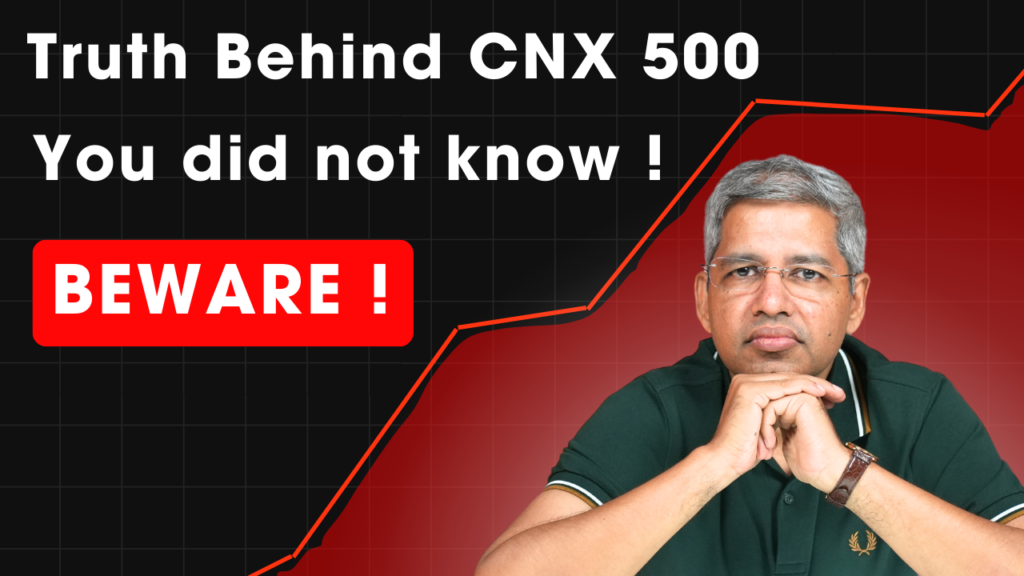
A decent day, I would say. There was a reasonable bounce in the markets, with Bank Nifty leading the way. While not much has changed, it’s reassuring that we are not immediately heading down any further. We have been consolidating for two to three sessions, and today we showed a bit of pep in terms of moving upward. It does seem like the market is not keen on going lower right now. However, this is just the view as of today.
There’s an amazing story today regarding the truth behind CNX 500, which probably most of you don’t know. When I first looked at it, I was taken aback and didn’t know about this.
Where is the market headed?
Market Overview
As I mentioned, the market is meandering in a couple of hundred-point range. The trend that emerged from the beginning of last month seems to be flattening out. Only if we go below this bottom will we say the market is heading down further. If we stabilize around here and start moving above this average, I think that fear will likely dissipate soon. That’s the reading as of today, though things can change on a day’s notice.
Today, Nifty is up 0.66%
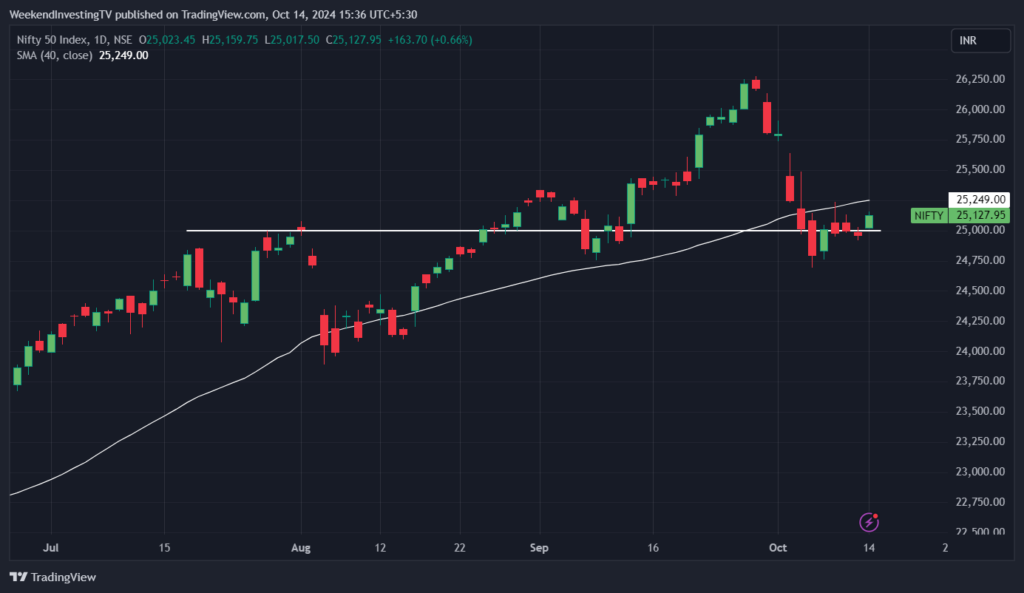
Nifty Next 50
Nifty Next 50 is above the average, near its previous high. In the last three to four sessions, we’ve moved from 72,500 to nearly 75,500, with a rise of 0.36% today. Overall, things are looking alright.
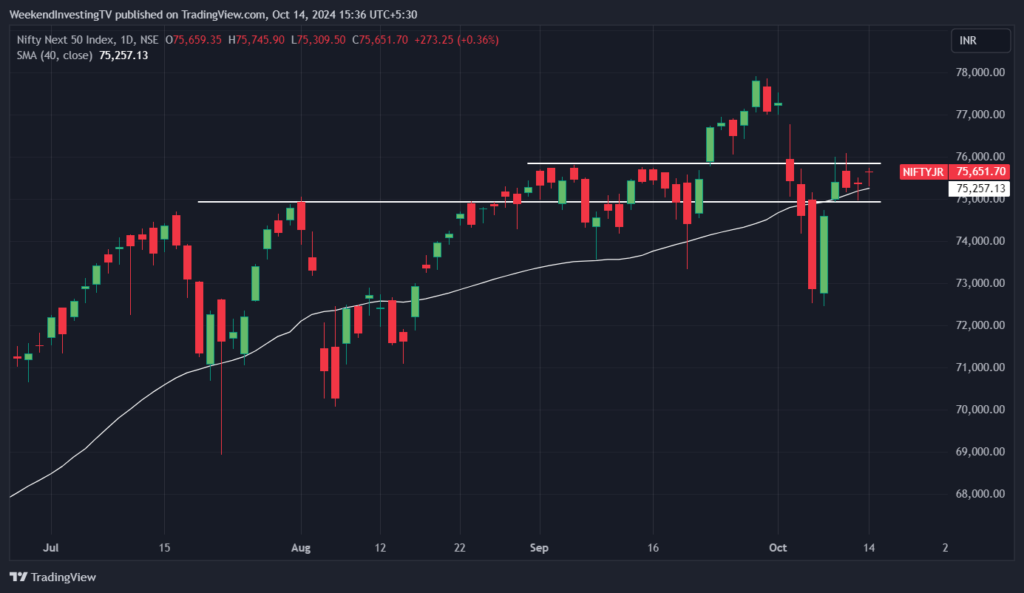
Nifty Mid and Small Cap
Mid caps closed at a six to seven-day high, which is a positive sign, up 0.36%. Small caps also reached a six to seven-day high, up 0.29%. Although these are not significant moves, the gradual upward trend is reassuring.
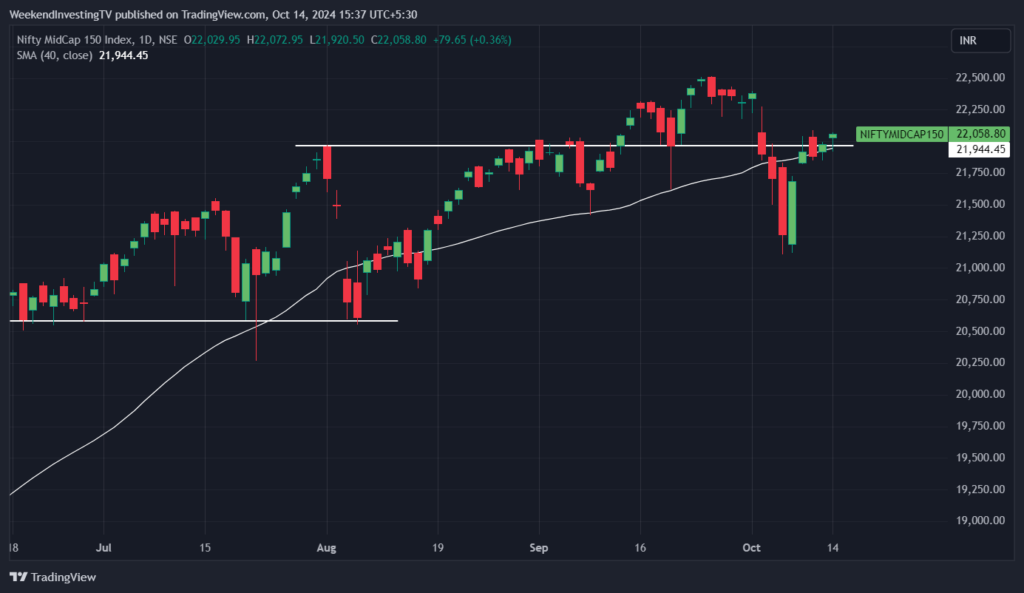
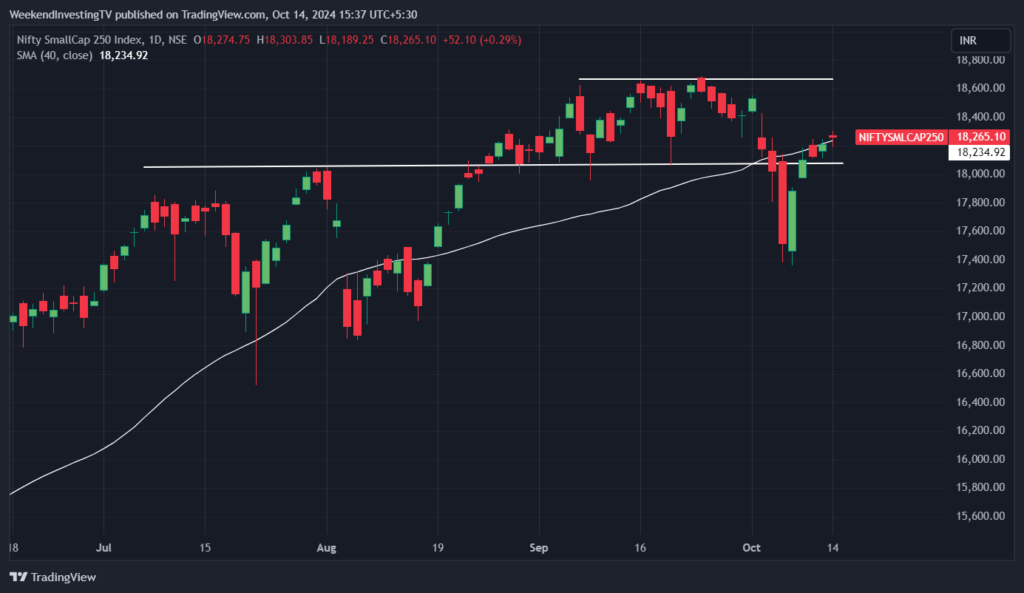
Nifty Bank Overview
Bank Nifty experienced the biggest move, up 1.2%, and it seems to be coming out of weakness as it approaches growth above the average.
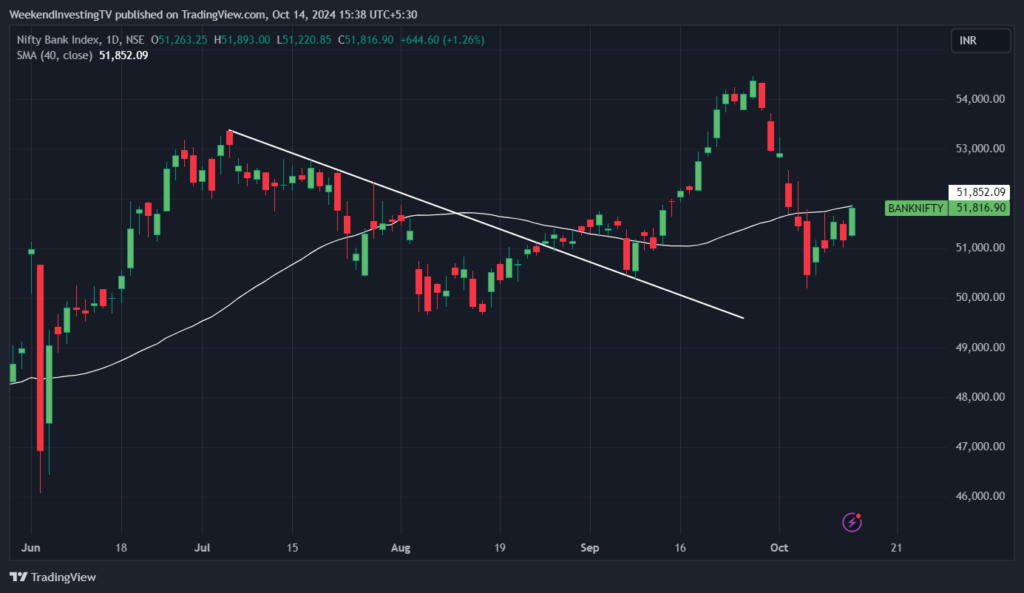
Advanced Declined Ratio Trends
Currently, the momentum trends and advance-decline ratio are almost even, with 262 advances to 235 declines among the top 500 stocks. Therefore, we can say the market is fairly evenly poised.
In terms of institutional activity, FII selling in the last session on October 11 was negative at 4,000 crores, while DIIs bought nearly what FIIs sold, at 3,700 crores. There’s no significant imbalance, as both institutional buying and selling are reasonably balanced.
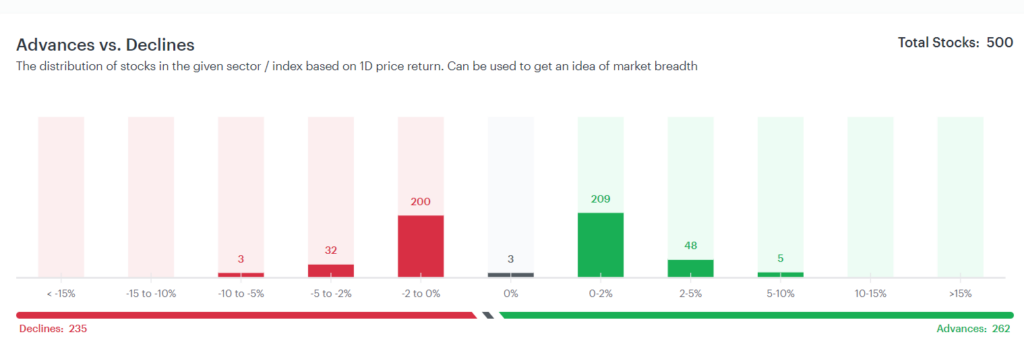
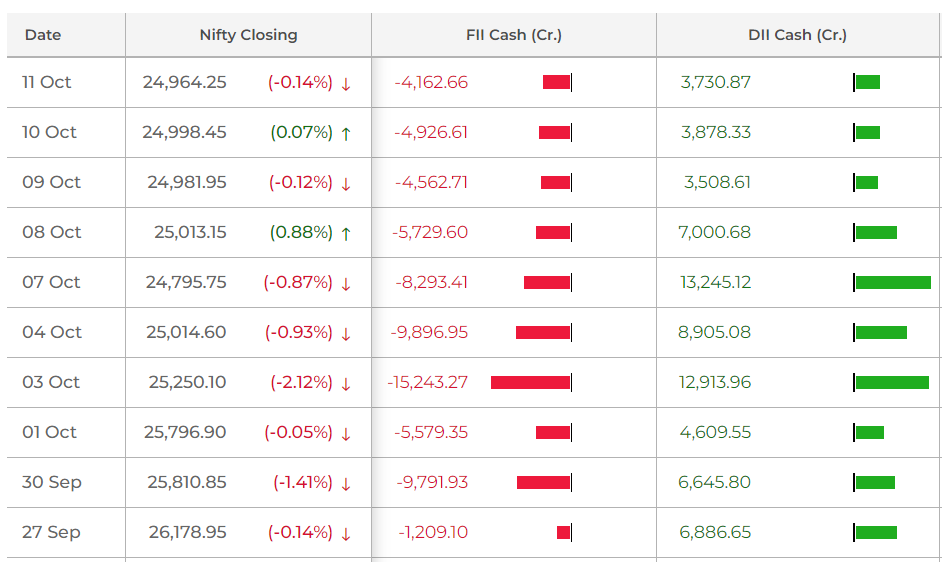
Nifty Heatmap
The heat map shows a mixed bag, with stocks like Maruti, ONGC, Bajaj Finance, Axis, Adani Enterprise, and Trent losing some ground. On the other hand, Wipro Tech, Mahindra, HDFC Bank, which surprised with a 2.25% increase, Kotak Bank, and HDFC Life are all up. Interestingly, a large manager sold out of HDFC Life, marking a potential bottom for that stock.
ITC is up 1.79%, and L&T is up 2%. In Nifty Next 50, Loda is up 3.4%, and DLF is up 1.9%. However, D-Mart faced a setback, down 8% after its results. In the public sector, you had IOC, Gas Authority, REC, and PFC slightly in the green today, not really falling.

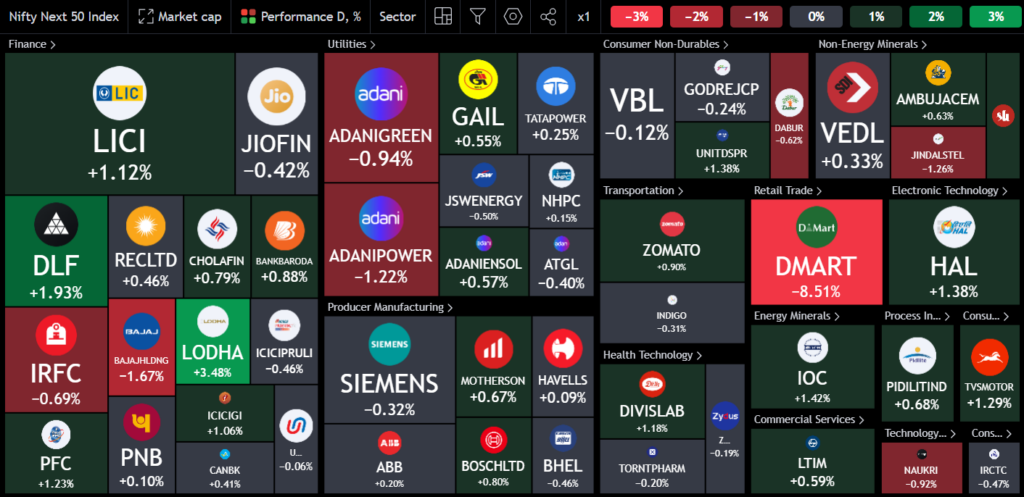
Sectoral Overview
Sectoral trends show real estate up 1.6%, leading the way along with Bank Nifty, primarily driven by private banks, infrastructure, and FMCG stocks, all of which rose by more than half a percent today. Over the past week, only FMCG has been down by 1%; otherwise, everything else has seen recovery. In the last month, FMCG is down 4%, and energy is down 1.6%, while most others are within half to one percent negative, or showing positive gains of two to six percent. Metals have been leading on a monthly basis, although for today, they and commodities are softer compared to other sectors.
Looking at the overall picture for the past twelve months, most sectors are performing well, with private banking lagging behind. Yet, most sectors are showing nice double-digit gains. In the very short term, markets will always have issues, but if you look at the reasonably long term, returns are widespread. You really have to do something silly in the Indian markets not to make money, especially in the last five years. If your returns haven’t been at least 100%, something is likely wrong.
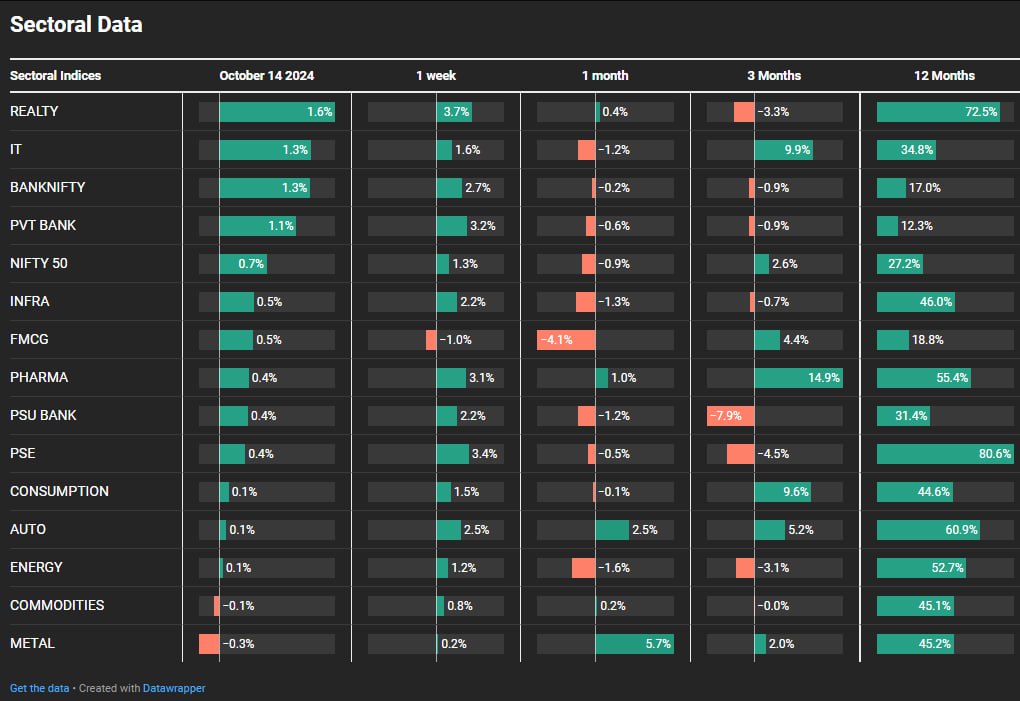
Sectors of the Day
Nifty REALTY Index
In real estate, stocks like Raymond, DLF, and Godrej are moving up, with Raymond and Loda performing well. Real estate has been consolidating since June, showing a long-term bullish trend. However, there are short periods of consolidation. On the ground, I can vouch for the NCR market: things have slowed down, and sales have declined. But it’s not like there are discounts or a surplus of sellers with no buyers. That situation is not present at all.
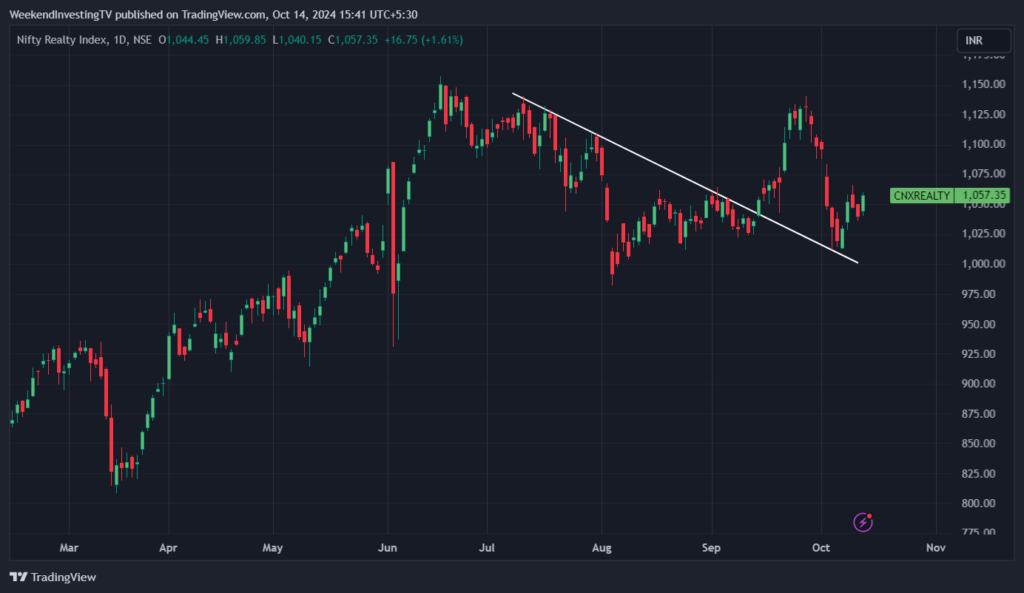
Stock of the Day
Aptus Value Housing
Aptus Value Housing Finance stood out today, rising 8% to new highs after a period of consolidation. It appears to be forming an inverted H&S pattern, and with multiple tops being broken, there’s a chance it could continue to rise significantly.
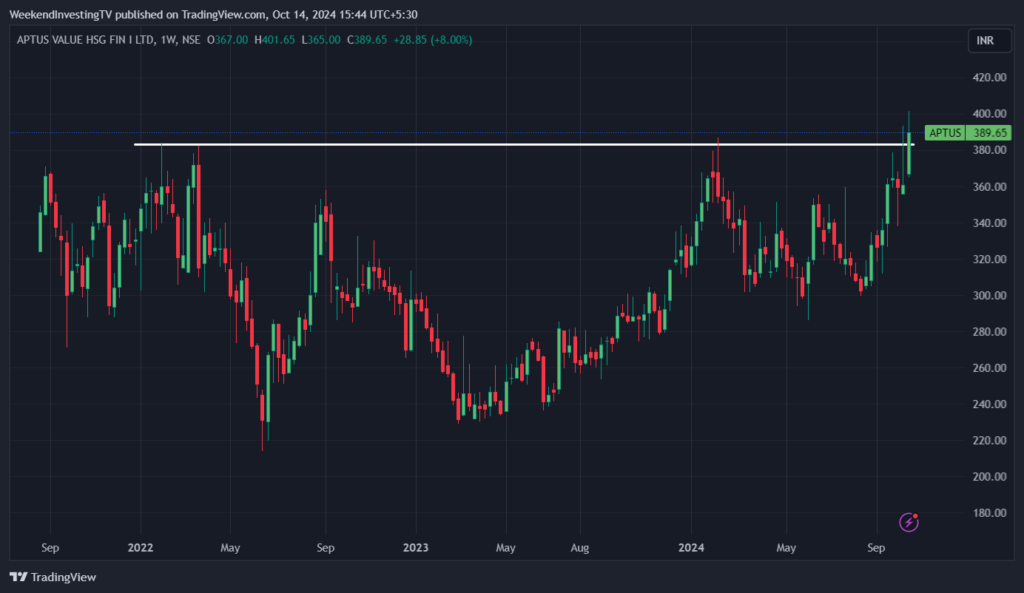
Story of the Day : The True Picture of CNX 500
What is CNX 500? It is an index created by the index committee at the index company, which is owned by the NSE. They determine the index’s constituents and their weightage based on their own rules. CNX 500 comprises the top 500 stocks in the NSE universe, consisting of 100 large caps, 150 mid caps, and 250 small caps.
However, can you guess the total weightage of just the top 10 stocks from the CNX 500 universe? The top ten stocks—HDFC Bank, Reliance, ICICI, Infosys, ITC, Bharti, Tata Consultancy, Larsen, Axis, and State Bank of India—account for 33% of the CNX 500 index. This means that just 2% of the stocks make up 33% of the weight, while the remaining 98% make up only 67% of the weight.
This skewed weightage means that if the larger caps are not performing, it has significant implications for the CNX 500’s performance. For instance, if HDFC Bank is underperforming, that’s 6.6% of your index struggling. Similarly, if Reliance doesn’t perform for five years, it affects 5% of your index.
Within the next 500 stocks, the distribution is as follows: the top 50 stocks account for 59% of the weight. The next 50 stocks take up another 15%, so combined, the top 100 stocks make up 74% of the CNX 500. The 101st to 250th stocks add another 18%, leaving the remaining small caps with only 9% weight in the entire index. If the large caps and mid caps are stagnant, and the small caps are performing poorly, the CNX 500 will hardly move.
This highlights the index’s large-cap orientation. CNX 500 may sound like a diversified index of large, mid, and small caps, but the weightage is disproportionately skewed towards large caps. When comparing Nifty and CNX 500 over the last 10-15 years, their trajectories show little difference, undermining the true purpose of creating the CNX 500.
The top seven sectors out of about 15 account for 72% of the weightage. Thus, not only is there market cap concentration, but sector concentration as well. For example, financial services comprise 28%, oil and gas 9.5%, and FMCG and automobiles each at 7.5%. If these key sectors don’t move, the index stagnates. Additionally, sectors like real estate and textiles are vastly underrepresented, raising questions about their actual contribution to the economy.
For anyone following an ETF based on CNX 500 or similar products, this skewed weightage implies you are likely experiencing large-cap performance. It would be more accurate to refer to it as a large-cap index with some exposure to mid and small caps because it’s misleading to imply CNX 500 represents the top 500 stocks comprehensively.
In contrast, strategies that look at the CNX 500 but utilize equal weighting for stocks can provide a performance kicker in your portfolio. This method treats all stocks equally, regardless of weight, enabling better diversification and potential gains from smaller companies that may grow into larger caps.
As more money flows into large caps, their performance may slow, which is why having exposure to mid and small caps is crucial. This approach strengthens your portfolio’s overall performance.












